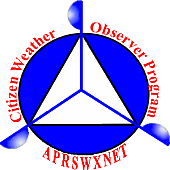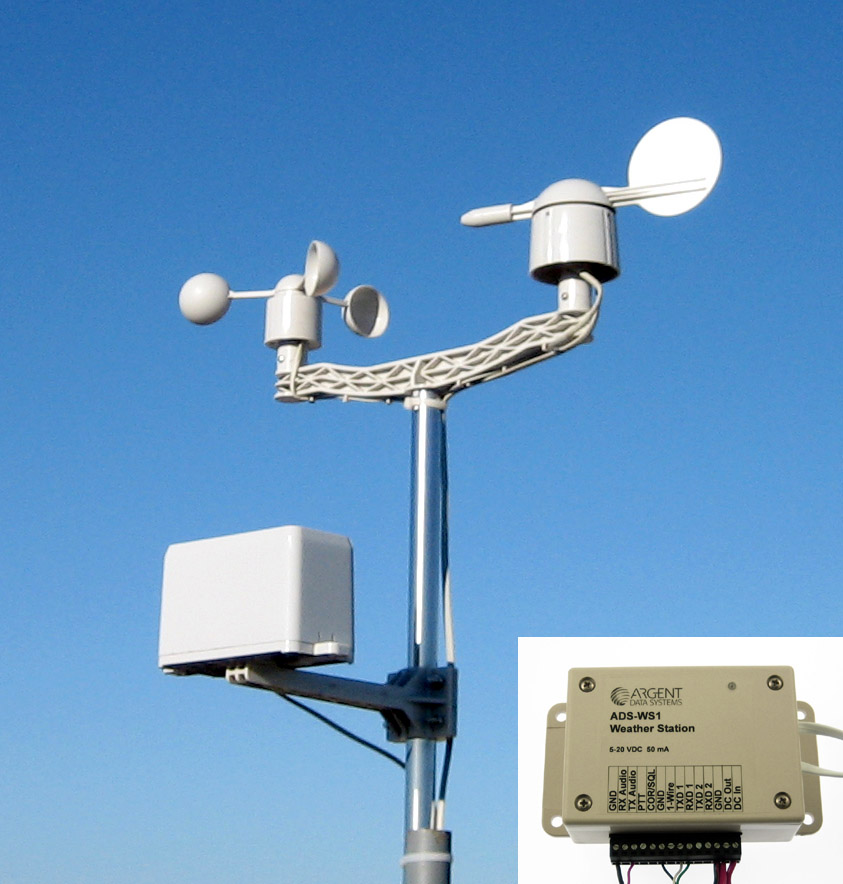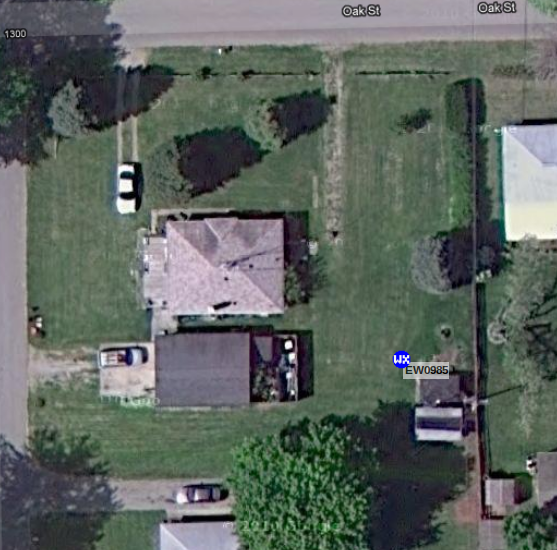| Ypsilanti, Michigan Weather | |||||||||
 |
Civilian Weather Observation Program  CWOP Number: CWOP Number: EW0985 |
 |
|||||||
|---|---|---|---|---|---|---|---|---|---|
| By: Jay Nugent - WB8TKL | - References & NWS Standards - | Latest Update: Sept 15th 2012 | |||||||
| Ypsilanti, Michigan Weather | |||||||||
 |
Civilian Weather Observation Program  CWOP Number: CWOP Number: EW0985 |
 |
|||||||
|---|---|---|---|---|---|---|---|---|---|
| By: Jay Nugent - WB8TKL | - References & NWS Standards - | Latest Update: Sept 15th 2012 | |||||||
Back to Home
If you are going to be serious about having a weather station, you should be serious about its accuracy. This is different from precision, as precision is like measuring the temperature to precision within a tenth of a degree. But if you place that sensor in the Sun or just outside a building on a brick wall, then all it is going to measure is the heat radiated from the bricks! Nope, we purists want our instruments to read the weather with accuracy, and that takes a little work and forethought in instrument placement.
The National Weather Service standards call for specific heights at which to take wind, temperature, humidity, barometric pressure, and rainfall measurements. Some of these standards are based on scientific requirements, and others are simply that weather data (and the long-term statistics they provide) have been taken at these heights for the past 150 years - and to change those standards now would skew any trend analysis calculations. So consistancy is the key issue here.
Basically, temperature, humidity, and barometric pressure have always been measured from the height of your average Gill box. Most Gill boxes have been roughly chest or head height, so the NWS says the height should be roughly 1.5 meters above ground. This height results in temperatures that reflect the air temperature we feel when standing, and not the temperature of the grass or weeds surrounding the measurement site. The same holds true for humidity measurements. Barometric readings have always been taken at this "chest level" height for well over a century, and we continue to do so for consistancy. Temperature sensors should be 100 or more feet away from any paved surfaces as these produce heat in the daytime and their thermal mass radiates heat or cool for long distances.
Rainfall has factors that affect the readings when sampled at different heights above average terrain. Rainfall amounts are supposed to reflect the precipitation that actually reaches the ground surface. Under many conditions, wind affects this, so rainfall is best sampled roughly 2 to 3 feet above ground. Statistically, rainfall samples taken 10 or 20 or more feet above ground level often indicate FAR LESS precipitation than samples taken at the same location but much nearer the ground. Low rainfall buckets best represent rain that would actually reach or come in contact with the ground, while eliminating the effects of splash-back from raindrops bouncing off of the ground surface and getting into the collection cup resulting in a greater indication of rainfall than what is true.
Wind speed and direction vary greatly depending on height above ground. Weather is affected not by the air at the surface, but the larger airmasses moving ABOVE the treetops. Surface winds (below 10 feet) and heavily affected by grass, weeds, vegitation, and ground surface turbulance and flow resistance. Measurements taken below 10 feet are considered Agricultural winds. Winds sampled above 10 feet but below 30 feet are affected by hedges, bushes, small trees and most single story buildings. Waves of air flow over or around buildings upset the speed and direction of wind measurements. So the NWS typically places wind measurement instruments at 33 feet above average terrain. Obstructions such as trees are kept at a distance of 2 times their height from the weather instruments, as much as possible. Wind speed and direction is never taken from atop a building as a wave of airmass has to flow more quickly over (or around) a building - or sometimes its flow is impeded by the building, or is far too turbulent - either way, incorrect windspeed and direction errors will result. Hence the need to sample above these obsticles but not TOO high that our measurements don't reflect very well the winds we may feel on the ground. It is a bit of a trade-off.
With this in mind, I set out to follow the NWS Standards as closely as possible within the constraints of my yard and surrounding trees and structures. This resulted in a 33-foot mast as centrally located in a clear, unobstructed, area of my yard as possible. The Gill box was then located roughly 1.5 meters above ground. The various construction pages on this website document my efforts.




These pages are maintained by:
jjn@nuge.com
Copyright © 2012 John (Jay) Nugent - WB8TKL
All Rights Reserved. All other Copyrights and
Trademarks are property of their respective owners.
